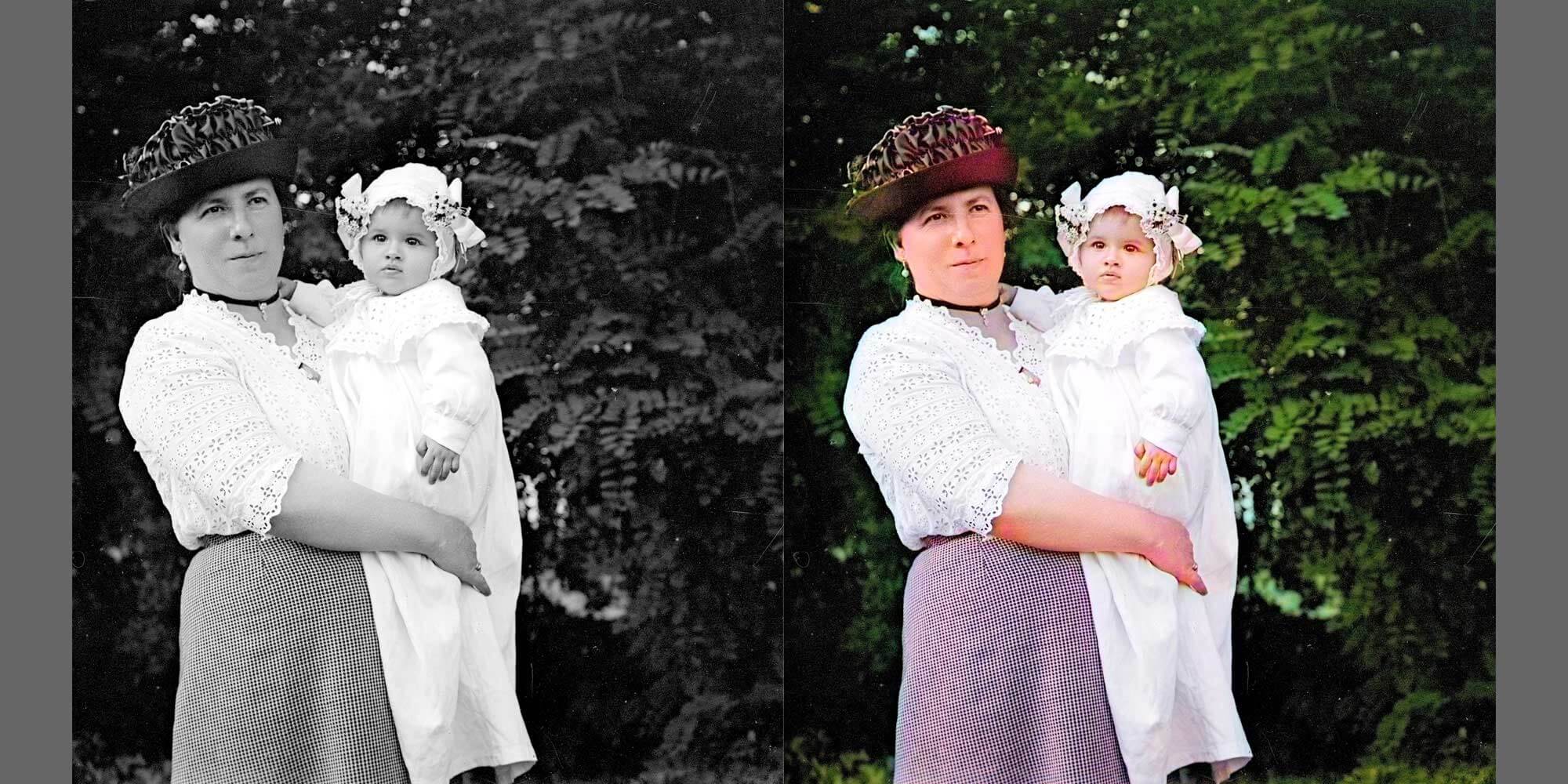We present photographs by the native Linzer photographer Alois Schwarz (1882-1946) from around 1900. He used a special camera with two lenses, separated by a distance approximately equal to that between human eyes. The pictures show panoramic views, well-known buildings and everyday scenes in Linz and its surroundings at that time.
However, the original images are in black and white. We will show how AI technology can be used to identify the correct colors for each object in the image.
The challenges are obvious: a black and white image only holds the intensity value for each pixel in the image. Consequently, it does not contain enough information about the original color of the pixel. The AI system should therefore be able to autonomously make decisions about the correct color of each pixel, but this can only happen if the system has a basic understanding of the visual world and of how objects appear in it. While many real-world objects have similar colors regardless of region and time (e.g. trees, leaves, rivers), there are objects that can have a wide range of colors, such as clothing. We will take a closer look at the decision-making process of the AI and see how and why AI sometimes makes mistakes regarding the choice of color.
Credits
Archiv der Stadt Linz
Ali Nikrang (Ars Electronica Futurelab)
DeOldify project (https://github.com/jantic/DeOldify)



